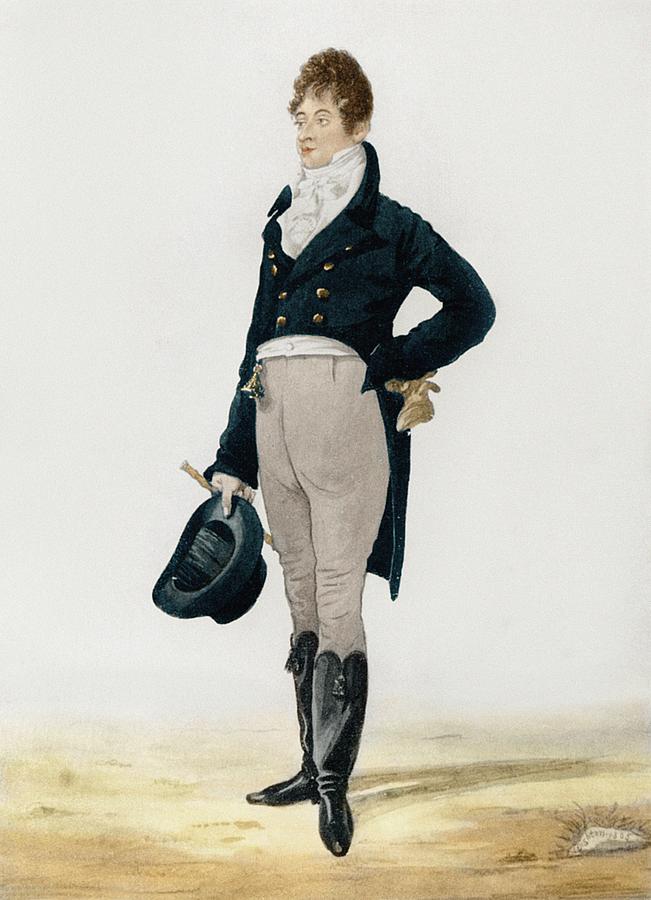The competitive technology market today is no longer about the quality of a certain brand. It’s now more associated with how a brand is perceived based on its association with people deemed as experts in the field. More often than not, these relationships are cultural ones rather than plain business relationships.
These individuals, called “micro-influencers,” are not always paid in cash, but they are instead given gifts in the form of trips, meals, products, or technology. They don’t only improve the sales of a company; they also help retain existing customers. Whether on Instagram, Twitter, YouTube, or Facebook, social media influencers are changing the world of marketing.
Centuries-old marketing tactic
Brand influencers aren’t really new. They have been around for centuries, even before the emergence of social media as we know today.

Image: George Bryan Beau Brummel. Photo taken from He Spoke Style
George Bryan “Beau” Brummell was a perfect example of this. He was an expert in men’s fashion, and brands that were associated with his name became successful. His name was even included in poems and song lyrics in the 1800s. There’s also Nancy Green, a former slave who became the model for Aunt Jemima pancake mix in 1893. Celebrities took over product advertisements in the 20th century, but brand influencers are making a major comeback with the help of social media.
“I think they don’t call ’em influencers for nothing,” said Alex Bolen, the chief executive of Oscar De La Renta, in an interview with CBS News. “It would not be an exaggeration to say that our handbag business has taken off through our engagement with the influencer community. Our production has doubled.”
This situation is not limited to the fashion industry. Social media influencers have a big impact on the technology industry as well. In fact, social media platforms have increased from 190 to 740, and their market size is valued at $6.5 billion.

@StringNguyen Instagram Post on add more leads, more sales validation through adding wix.
Companies are even hiring influencers directly in a formal capacity. For example, String Nguyen was hired by video tech company Shootsta as its brand ambassador. Myleene Klass, a reality TV star from the UK, also became a brand ambassador in previous years.
Aside from influencers who started out as regular people struggling to grow their social media following, CEOs of large companies have also become influencers in their own niche. WOAW CEO Joe Binder is running his branding company and plugging it at the same time. Jonathan Jabali, a social media influencer, and entrepreneur have been promoting his brand of cryptocurrency using interesting Instagram photos.
Personalized touch
These influencers, whether new or popular ones have an effect on how we perceive a technology or brand. They can shape our buying decisions better than a huge billboard of a famous celebrity. While celebrities on a magazine spread or on Instagram are more pleasing to look at, we can’t really interact with them the same way we can interact with influencers.
People, especially the younger generation, crave for the personal touch that only influencers can give. You can’t expect well-known people to reply to your inquiries about a certain product. Micro-influencers are engaging and taking time to respond to their followers. Micro-influencers’ engagement rate is 60% higher than popular accounts, and this makes them be perceived as being more trustworthy and genuine. In return, the brands they promote also get this same level of trust.
Around 84% of millennials actually don’t trust traditional ads. Though they hate ads, 58% of millennials won’t mind if their favorite influencer were in the ads. This is why brands and companies should allocate part of their marketing budgets to 10 or 20 micro-influencers, rather than put all their money on one celebrity.
Influencer culture in the tech industry
What’s clear is that publicity gimmicks—like the “Pepsi Challenge” where random people are asked to taste unlabeled soda and choose which one tastes better—will no longer work. Buyer decisions are influenced by more than just what happens in front of the camera. The local voices and faces behind the tech brands are more relevant to consumers, specifically the younger ones.
Micro-cultures in the community allowed consumers access to objective and genuine opinions. Consumers can direct their questions to these influencers without the fear of being ignored. What tech brands need to keep in mind is that a personal touch can go a long way in this modern and digital age.
